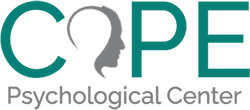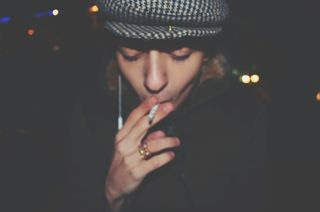Don’t Just Say ‘NO’ to Drugs – Say ‘YES’ to Life
Transitioning from middle to high school is a huge shift for many teens. After leaving the relative safety of a familiar school, they’re suddenly thrown in to a brand new school with older peers (i.e. 10th -12th graders) who are at a totally different stage of development – farther along in puberty, with different social hierarchies and romantic or even sexual relationships. On top of this, the majority of students try alcohol or other drugs for the first time in high school. For these reasons, substance use researchers focus on the transition to high school as a key window for intervening to prevent or delay substance use initiation as much as possible.
Teens who drink before age 15 are about twice as likely to report having alcohol-related problems later in life than teens who were older when they started drinking (Fergusson et al., 1994). Moreoever, about 11% of teens meet criteria for a substance use disorder diagnosis (Merikangas et al., 2010). These statistics are striking. Why are these numbers so high? And what can we do to prevent teens from developing substance use disorders?
Unfortunately, these are not easy questions to answer. Substance use disorders are complex and determined by many factors, including influences from peers, genes, and the family environment. For example, genetic factors explain 40-60% of the risk for alcohol use disorders (Prescott & Kendler, 1999). That leaves about half of one’s risk towards alcoholism being associated with environmental factors – something that may be more malleable since we can’t change someone’s genes (yet).
The concept of “alternative reinforcers” has been getting recent attention from researchers working in this area. These are activities (i.e. hobbies, sports, dancing, arts, school, etc.) that represent alternative ways of obtaining pleasure outside of substance use. Alcohol consumption tends to decrease when adults have greater access to alternative reinforcers (Vuchinich & Tucker, 1996). However, there has been very little research to illustrate how alternative reinforcers might work in adolescence.
A recent study from the University of Southern California attempted to understand how access to alternative reinforcers might influence substance use in teens. This study tracked approximately 3,400 9th grade students in Los Angeles and looked at the number of hobbies a student had and how much pleasure they gained from them. Engaging in fewer activities outside of substance use (e.g., sports, arts, acting, volunteering, etc.) was associated with increased substance use (Leventhal et al., 2015). Similarly, research from the University of Pennsylvania found that young adults with more depressive symptoms engaged in less alternatively reinforcing activities, and engaging in less alternatively reinforcing activities was related to more smoking (Audrain-McGovern et al., 2011). Young adults with depression may withdraw from their outside environment and turn towards smoking as one of their only sources of pleasure.
These studies are all part of a growing body of research showing that substance use occurs in the absence of alternative reinforcers. In other words, substance use becomes more attractive to teens who don’t have other means of getting pleasure and satisfaction. This idea is particularly important given researchers believe that the more a teen is exposed to substances, the more likely it is that he or she will need higher levels of pleasure to find an activity enjoyable. In other words, using substances raises the bar for teens to find other things fun. Thus, that afternoon tea outing with grandma won’t be as interesting after that house party from the night before. Neuroimaging research supports this idea showing a decrease in the brain’s response to natural reinforcers in the environment among drug-addicted individuals (Hatzgiakoumis, Martinotti, Giannantonio, & Janiri, 2011).article continues after advertisement
“Alternative reinforcers” is an interesting theory, but what does it mean for substance abuse treatment?
One particular Auburn University study randomly assigned 133 students to either increase their activity level or reduce their substance use by 50% (Correia et al., 2005). These two groups were compared to a group that was instructed to not change their behavior. Both the substance use reduction group and the activity increase group significantly decreased their substance use at the end of the 4-week follow-up period. But participants told to engage in other activities not only decreased their substance use, but also showed increases in both exercise and creative behaviors. This finding is particularly interesting given that students were not specifically told to reduce their substance use, but that it appeared to have naturally happened as a byproduct of engagement in other activities. Thus, this provides some evidence that it’s possible to intervene on substance use behaviors without directly changing use behavior itself but through changing the environment.
So what can be done from an environmental policy perspective? The National Recreation and Parks Association released an overview of the public health impact that having parks and recreation services can have on a community. They noted that lower income neighborhoods have less access to parks and related services. More public funding of parks, community centers, mentorship programs, and sports can help us create more alternative reinforcers on a societal level. This is particularly important given that music, arts, gym, and health education are the first to go with budget cuts. Additionally, more research needs to be done in how we can more effectively and efficiently involve teens in healthy activities as well as tailoring certain types of activities (e.g. sports vs. arts) to the unique personality of teens. This may be particularly important early on in childhood and adolescence prior to substance use engagement.
As researchers and policy makers pursue these goals of preventing and delaying substance use initiation, we can start right where we are and get teens committed to hobbies before high school even starts. So when your 9th grade son or daughter meets a new 11th grade friend in their Biology class who asks if they want to go to this pool party where alcohol will be around, your son or daughter can say “No” because they already said “Yes” to hiking with friends.
Citations:
Audrain‐McGovern, J., Rodriguez, D., Rodgers, K., & Cuevas, J. (2011). Declining alternative reinforcers link depression to young adult smoking. Addiction, 106(1), 178-187.
Correia, C. J., Benson, T. A., & Carey, K. B. (2005). Decreased substance use following increases in alternative behaviors: A preliminary investigation. Addictive behaviors, 30(1), 19-27.
Hatzigiakoumis, D. S., Martinotti, G., Giannantonio, M. D., & Janiri, L. (2011). Anhedonia and substance dependence: clinical correlates and treatment options. Front Psychiatry, 2(10).
Leventhal, A. M., Bello, M. S., Unger, J. B., Strong, D. R., Kirkpatrick, M. G., & Audrain-McGovern, J. (2015). Diminished alternative reinforcement as a mechanism underlying socioeconomic disparities in adolescent substance use. Preventive medicine, 80, 75-81.
Merikangas, K. R., He, J. P., Burstein, M., Swanson, S. A., Avenevoli, S., Cui, L., … & Swendsen, J. (2010). Lifetime prevalence of mental disorders in US adolescents: results from the National Comorbidity Survey Replication–Adolescent Supplement (NCS-A). Journal of the American Academy of Child & Adolescent Psychiatry, 49(10), 980-989.article continues after advertisement
Prescott, C. A., & Kendler, K. S. (1999). Genetic and environmental contributions to alcohol abuse and dependence in a population-based sample of male twins. American Journal of Psychiatry.

